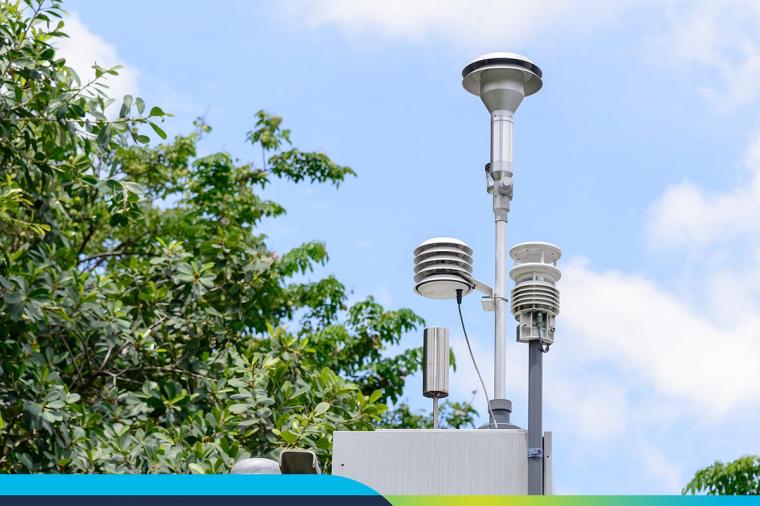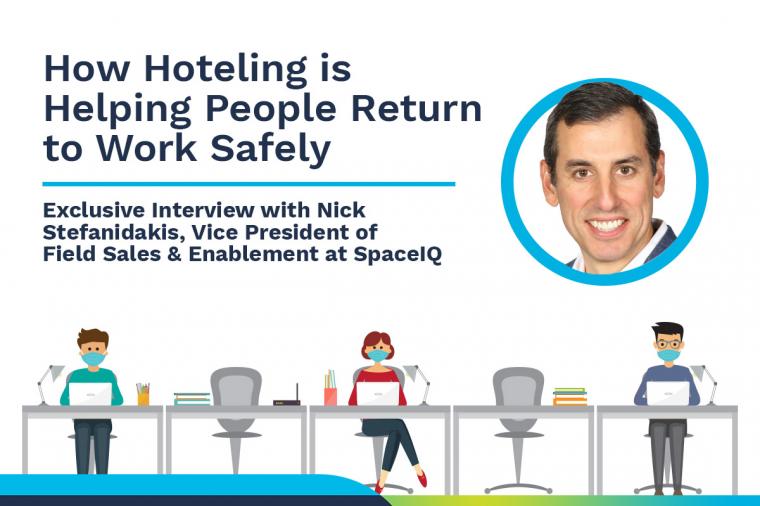The City of Roseville Environmental Utilities Department Streamlines CAD & GIS Workflow Processes While Getting a Grip on Rapid Growth.
Located a few miles to the north east of Sacramento, CA, the City of Roseville, California, began as a sleepy railroad town. Recent years have seen the city grow outward in all directions with an expansive industrial zone that is headquarters to many large corporations. With just four full time employees, the City of Roseville’s Environmental Utilities Department (REUD) needed to scale quickly and efficiently to handle the challenges of managing and maintaining its extensive utilities infrastructure, without increasing head count.
Impact of Growth
Facing the challenge of a rapidly growing population, the City of Roseville has expanded water, electrical, sewage, recreational, police, and fire protection services. The downstream impact on REUD has meant rapid mobilization to manage the now 1,500 miles of combined pipeline for water, wastewater, stormwater, and recycled water.
In addition to its mapping responsibility, REUD supports asset management across 12 groups and seven city departments and relies on a variety of asset management systems, including HANSEN, MP2, Cascade, Land Logic, Squarerigger, and several ad-hoc Microsoft Access databases.
Keeping their asset data up to date and forecasting maintenance with just four full time employees soon became a significant challenge for REUD.
Putting Two and Two Together
 Headed up by Roy Van Ness, Mapping Supervisor, the REUD initially relied on a variety of mapping software tools. Like many state and local government agencies, Van Ness’ team were using AutoCAD® Map 3D to capture and create data, simply because they believed that a CAD-based tool was better for quickly and accurately editing their pipe networks. From CAD, they then exported to ArcInfo Coverages so they could perform the hydraulic modeling in ArcInfo. Within ArcInfo, they wrote Arc Macro Language (AML) routines to link raw data tables to their linework originating from CAD and their asset data tables being stored in HANSEN, which required the proper data structure and IDs to populate.
REUD determined early on that they needed both CAD and GIS software to get the job done and as a result they invested in both platforms – this however, brought unexpected challenges. While the tools operated brilliantly in isolation, the lack of integration soon began to cause headaches.
For instance, the initial workflow between REUD’s CAD and GIS software involved importing and exporting data back and forth which often led to redundant or outdated information and a greater chance for losing data. According to Van Ness, this process “wasn’t an easy thing to do, and was very cumbersome”. Although the process worked, he needed to streamline it so his limited staff could keep up with the increasing updates. Additionally he needed to simplify the steps so he wasn’t the only person who knew the intricacies of what needed to be done.
To help streamline the process Van Ness engaged his local Autodesk reseller, Ideate, to replicate all point and arc graphical data being stored in ArcSDE in AutoCAD Map 3D according to a newly developed CAD standard. They then replicated all the ArcSDE attribute tables as object data tables within the CAD drawings. Through some custom programming, several routines were created to automatically populate pipe line attributes with its coincidental “from” and “to” attributes. Using feature classes REUD technicians were able to create GIS-quality graphical and attribute data within the CAD environment. This data would then be exported to shapefiles with the click of a button and populated with asset data from HANSEN. Finally, after Van Ness had finished some additional quality checking (QC) on the data he would import the shapefiles into ArcSDE.
Bridging Design and Geospatial Asset Data with AutoCAD Map 3D
As Map 3D has evolved today to support ArcSDE running SQL server, Van Ness and his team have connected their CAD mapping software directly to ArcSDE for editing live spatial and attribute data within Map 3D, greatly reducing the demand on the GIS department. REUD then distributes the most current data from ArcSDE to its field personnel by periodically publishing it to DWF format and storing it on the network, making it readily available and up-to-date for field crews to access.
“The time savings and ability to quickly convert CAD data to the GIS have been invaluable,” said Van Ness. “We have also realized cost savings by the ease of conversion and manipulation,” Van Ness continued that by using the predefined tables, created by Ideate, the REUD technicians can now easily be trained to clean up their own data, without so much of his involvement. They can do their QA/QC within ArcInfo by comparing the incoming CAD mapping and attribute data with the existing assets in HANSEN all from within one location. All the data input is done on the CAD side, from the start, creating a more “streamlined” process, minimizing overlapping of work, and reducing the time spent maintaining the data.
By Jason Hill – Geospatial Business Development Manager, Ideate, Inc.
Originally Published in [acronym] magazine, Issue 9
Bio:
Headed up by Roy Van Ness, Mapping Supervisor, the REUD initially relied on a variety of mapping software tools. Like many state and local government agencies, Van Ness’ team were using AutoCAD® Map 3D to capture and create data, simply because they believed that a CAD-based tool was better for quickly and accurately editing their pipe networks. From CAD, they then exported to ArcInfo Coverages so they could perform the hydraulic modeling in ArcInfo. Within ArcInfo, they wrote Arc Macro Language (AML) routines to link raw data tables to their linework originating from CAD and their asset data tables being stored in HANSEN, which required the proper data structure and IDs to populate.
REUD determined early on that they needed both CAD and GIS software to get the job done and as a result they invested in both platforms – this however, brought unexpected challenges. While the tools operated brilliantly in isolation, the lack of integration soon began to cause headaches.
For instance, the initial workflow between REUD’s CAD and GIS software involved importing and exporting data back and forth which often led to redundant or outdated information and a greater chance for losing data. According to Van Ness, this process “wasn’t an easy thing to do, and was very cumbersome”. Although the process worked, he needed to streamline it so his limited staff could keep up with the increasing updates. Additionally he needed to simplify the steps so he wasn’t the only person who knew the intricacies of what needed to be done.
To help streamline the process Van Ness engaged his local Autodesk reseller, Ideate, to replicate all point and arc graphical data being stored in ArcSDE in AutoCAD Map 3D according to a newly developed CAD standard. They then replicated all the ArcSDE attribute tables as object data tables within the CAD drawings. Through some custom programming, several routines were created to automatically populate pipe line attributes with its coincidental “from” and “to” attributes. Using feature classes REUD technicians were able to create GIS-quality graphical and attribute data within the CAD environment. This data would then be exported to shapefiles with the click of a button and populated with asset data from HANSEN. Finally, after Van Ness had finished some additional quality checking (QC) on the data he would import the shapefiles into ArcSDE.
Bridging Design and Geospatial Asset Data with AutoCAD Map 3D
As Map 3D has evolved today to support ArcSDE running SQL server, Van Ness and his team have connected their CAD mapping software directly to ArcSDE for editing live spatial and attribute data within Map 3D, greatly reducing the demand on the GIS department. REUD then distributes the most current data from ArcSDE to its field personnel by periodically publishing it to DWF format and storing it on the network, making it readily available and up-to-date for field crews to access.
“The time savings and ability to quickly convert CAD data to the GIS have been invaluable,” said Van Ness. “We have also realized cost savings by the ease of conversion and manipulation,” Van Ness continued that by using the predefined tables, created by Ideate, the REUD technicians can now easily be trained to clean up their own data, without so much of his involvement. They can do their QA/QC within ArcInfo by comparing the incoming CAD mapping and attribute data with the existing assets in HANSEN all from within one location. All the data input is done on the CAD side, from the start, creating a more “streamlined” process, minimizing overlapping of work, and reducing the time spent maintaining the data.
By Jason Hill – Geospatial Business Development Manager, Ideate, Inc.
Originally Published in [acronym] magazine, Issue 9
Bio:
 Jason Hill holds a degree in Physical Geography with an emphasis on GIS and Remote Sensing techniques from U.C. Santa Barbara. With over eight years of experience, he has worked as a GIS Specialist conducting Business GIS analysis and has designed, developed, and deployed GIS/web based mapping applications. For the past several years, Jason has worked with state and local government agencies in an effort to increase their productivity through better management and integration of their CAD and GIS infrastructure data. As an Autodesk Certified Instructor and ESRI ArcGIS Authorized Instructor, Jason provides Ideate’s geospatial clients with training, consulting, and support for Autodesk, MUNSYS, and ESRI products.
Jason Hill holds a degree in Physical Geography with an emphasis on GIS and Remote Sensing techniques from U.C. Santa Barbara. With over eight years of experience, he has worked as a GIS Specialist conducting Business GIS analysis and has designed, developed, and deployed GIS/web based mapping applications. For the past several years, Jason has worked with state and local government agencies in an effort to increase their productivity through better management and integration of their CAD and GIS infrastructure data. As an Autodesk Certified Instructor and ESRI ArcGIS Authorized Instructor, Jason provides Ideate’s geospatial clients with training, consulting, and support for Autodesk, MUNSYS, and ESRI products.
 Headed up by Roy Van Ness, Mapping Supervisor, the REUD initially relied on a variety of mapping software tools. Like many state and local government agencies, Van Ness’ team were using AutoCAD® Map 3D to capture and create data, simply because they believed that a CAD-based tool was better for quickly and accurately editing their pipe networks. From CAD, they then exported to ArcInfo Coverages so they could perform the hydraulic modeling in ArcInfo. Within ArcInfo, they wrote Arc Macro Language (AML) routines to link raw data tables to their linework originating from CAD and their asset data tables being stored in HANSEN, which required the proper data structure and IDs to populate.
REUD determined early on that they needed both CAD and GIS software to get the job done and as a result they invested in both platforms – this however, brought unexpected challenges. While the tools operated brilliantly in isolation, the lack of integration soon began to cause headaches.
For instance, the initial workflow between REUD’s CAD and GIS software involved importing and exporting data back and forth which often led to redundant or outdated information and a greater chance for losing data. According to Van Ness, this process “wasn’t an easy thing to do, and was very cumbersome”. Although the process worked, he needed to streamline it so his limited staff could keep up with the increasing updates. Additionally he needed to simplify the steps so he wasn’t the only person who knew the intricacies of what needed to be done.
To help streamline the process Van Ness engaged his local Autodesk reseller, Ideate, to replicate all point and arc graphical data being stored in ArcSDE in AutoCAD Map 3D according to a newly developed CAD standard. They then replicated all the ArcSDE attribute tables as object data tables within the CAD drawings. Through some custom programming, several routines were created to automatically populate pipe line attributes with its coincidental “from” and “to” attributes. Using feature classes REUD technicians were able to create GIS-quality graphical and attribute data within the CAD environment. This data would then be exported to shapefiles with the click of a button and populated with asset data from HANSEN. Finally, after Van Ness had finished some additional quality checking (QC) on the data he would import the shapefiles into ArcSDE.
Bridging Design and Geospatial Asset Data with AutoCAD Map 3D
As Map 3D has evolved today to support ArcSDE running SQL server, Van Ness and his team have connected their CAD mapping software directly to ArcSDE for editing live spatial and attribute data within Map 3D, greatly reducing the demand on the GIS department. REUD then distributes the most current data from ArcSDE to its field personnel by periodically publishing it to DWF format and storing it on the network, making it readily available and up-to-date for field crews to access.
“The time savings and ability to quickly convert CAD data to the GIS have been invaluable,” said Van Ness. “We have also realized cost savings by the ease of conversion and manipulation,” Van Ness continued that by using the predefined tables, created by Ideate, the REUD technicians can now easily be trained to clean up their own data, without so much of his involvement. They can do their QA/QC within ArcInfo by comparing the incoming CAD mapping and attribute data with the existing assets in HANSEN all from within one location. All the data input is done on the CAD side, from the start, creating a more “streamlined” process, minimizing overlapping of work, and reducing the time spent maintaining the data.
By Jason Hill – Geospatial Business Development Manager, Ideate, Inc.
Originally Published in [acronym] magazine, Issue 9
Bio:
Headed up by Roy Van Ness, Mapping Supervisor, the REUD initially relied on a variety of mapping software tools. Like many state and local government agencies, Van Ness’ team were using AutoCAD® Map 3D to capture and create data, simply because they believed that a CAD-based tool was better for quickly and accurately editing their pipe networks. From CAD, they then exported to ArcInfo Coverages so they could perform the hydraulic modeling in ArcInfo. Within ArcInfo, they wrote Arc Macro Language (AML) routines to link raw data tables to their linework originating from CAD and their asset data tables being stored in HANSEN, which required the proper data structure and IDs to populate.
REUD determined early on that they needed both CAD and GIS software to get the job done and as a result they invested in both platforms – this however, brought unexpected challenges. While the tools operated brilliantly in isolation, the lack of integration soon began to cause headaches.
For instance, the initial workflow between REUD’s CAD and GIS software involved importing and exporting data back and forth which often led to redundant or outdated information and a greater chance for losing data. According to Van Ness, this process “wasn’t an easy thing to do, and was very cumbersome”. Although the process worked, he needed to streamline it so his limited staff could keep up with the increasing updates. Additionally he needed to simplify the steps so he wasn’t the only person who knew the intricacies of what needed to be done.
To help streamline the process Van Ness engaged his local Autodesk reseller, Ideate, to replicate all point and arc graphical data being stored in ArcSDE in AutoCAD Map 3D according to a newly developed CAD standard. They then replicated all the ArcSDE attribute tables as object data tables within the CAD drawings. Through some custom programming, several routines were created to automatically populate pipe line attributes with its coincidental “from” and “to” attributes. Using feature classes REUD technicians were able to create GIS-quality graphical and attribute data within the CAD environment. This data would then be exported to shapefiles with the click of a button and populated with asset data from HANSEN. Finally, after Van Ness had finished some additional quality checking (QC) on the data he would import the shapefiles into ArcSDE.
Bridging Design and Geospatial Asset Data with AutoCAD Map 3D
As Map 3D has evolved today to support ArcSDE running SQL server, Van Ness and his team have connected their CAD mapping software directly to ArcSDE for editing live spatial and attribute data within Map 3D, greatly reducing the demand on the GIS department. REUD then distributes the most current data from ArcSDE to its field personnel by periodically publishing it to DWF format and storing it on the network, making it readily available and up-to-date for field crews to access.
“The time savings and ability to quickly convert CAD data to the GIS have been invaluable,” said Van Ness. “We have also realized cost savings by the ease of conversion and manipulation,” Van Ness continued that by using the predefined tables, created by Ideate, the REUD technicians can now easily be trained to clean up their own data, without so much of his involvement. They can do their QA/QC within ArcInfo by comparing the incoming CAD mapping and attribute data with the existing assets in HANSEN all from within one location. All the data input is done on the CAD side, from the start, creating a more “streamlined” process, minimizing overlapping of work, and reducing the time spent maintaining the data.
By Jason Hill – Geospatial Business Development Manager, Ideate, Inc.
Originally Published in [acronym] magazine, Issue 9
Bio:
 Jason Hill holds a degree in Physical Geography with an emphasis on GIS and Remote Sensing techniques from U.C. Santa Barbara. With over eight years of experience, he has worked as a GIS Specialist conducting Business GIS analysis and has designed, developed, and deployed GIS/web based mapping applications. For the past several years, Jason has worked with state and local government agencies in an effort to increase their productivity through better management and integration of their CAD and GIS infrastructure data. As an Autodesk Certified Instructor and ESRI ArcGIS Authorized Instructor, Jason provides Ideate’s geospatial clients with training, consulting, and support for Autodesk, MUNSYS, and ESRI products.
Jason Hill holds a degree in Physical Geography with an emphasis on GIS and Remote Sensing techniques from U.C. Santa Barbara. With over eight years of experience, he has worked as a GIS Specialist conducting Business GIS analysis and has designed, developed, and deployed GIS/web based mapping applications. For the past several years, Jason has worked with state and local government agencies in an effort to increase their productivity through better management and integration of their CAD and GIS infrastructure data. As an Autodesk Certified Instructor and ESRI ArcGIS Authorized Instructor, Jason provides Ideate’s geospatial clients with training, consulting, and support for Autodesk, MUNSYS, and ESRI products.
















































